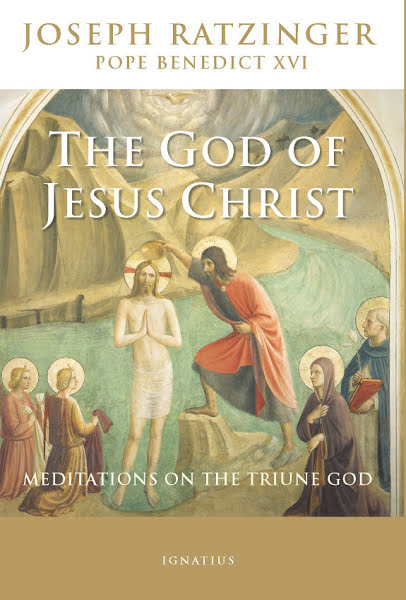Reading and Teaching Notes
I worked with Ignatius Press for the release of a second edition of The God of Jesus Christ by Joseph Ratzinger (Pope Benedict XVI). The first edition––only available in hardback––had gone out of print, but since this short text is not only so enriching for personal meditation on and study of the mystery of the Trinity but also incredibly useful to teachers and catechists for teaching the Trinity, Ignatius Press opted to re-release the book, this time in paperback and e-book formats. To accompany this second edition, Ignatius Press allowed me to write a new Introduction to the text along with reading and teaching notes. The Introduction appears in the text itself, but instead of including the notes therein we decided to offer them to readers online as a supplement. Those reading and teaching notes are now available to everyone in the (web)pages to follow, all linked below.
These notes are primarily (though of course not exclusively) addressed from one teacher to others, since each of us who teaches theology is involved in trying to make that “little theological lane” (p. 79 of 2nd edition [p. 69 of 1st edition]) that goes from the things close hand to the things far away, and we hope to stretch that lane all the way to where our students themselves are. I have taught this text many times in undergraduate theology courses and a few times in graduate courses, sometimes with my colleague Timothy O’Malley and sometimes on my own. I think this is the most useful short text on the Trinity not only for college classes but also for high school theology classes and catechetical courses, and my hope is that the notes I included make what is already a remarkably accessible text even more user-friendly, especially for the tasks of those of us who educate others. These notes are not so much lesson plan elements, but rather little sparks to fire the creativity of teachers in their own particular settings. It goes without saying that the thing that truly matters here is Ratzinger’s text itself and the central Christian mysteries to which his sermons point, so if the notes are not of interest or useful to some readers, the volume itself retains all of its value besides what I have added. If, on the other hand, readers do make use of the notes, then there is a little bonus included in this edition over what was offered previously.
Sermon 1: “God Has Names”
Sermon 2: “God Is Three and God Is One”
Sermon 3: “The Creator God”
Sermon 4: “Job’s Question”
Sermon 5: “Descendit de caelis”
Sermon 6: “…and became man”
Sermon 7: “Consubstantial with the Father”
Sermon 8: “Risen from the dead”
Sermon 9: “The Holy Spirit”

